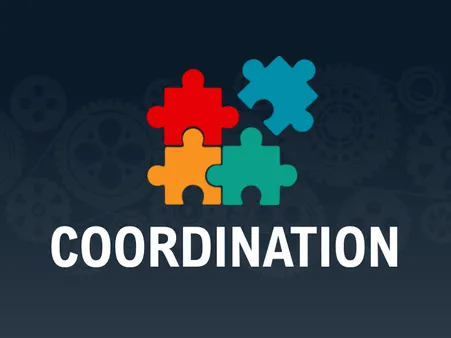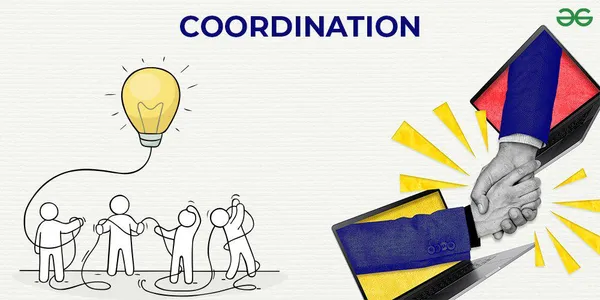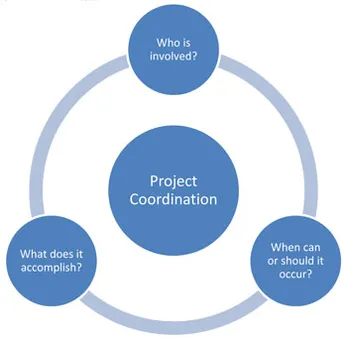Table of Contents
In the tapestry of life,** coordination** plays a pivotal role, weaving together diverse elements to create a harmonious symphony. It encompasses the synchronized interplay of thoughts, actions, and entities, enabling us to navigate the intricacies of communication, teamwork, physical movement, and even the wonders of music and nature. At Kizworld, we delve into the multifaceted world of** coordination**, exploring its profound impact on various aspects of our lives.
The Art of Coordination: A Collaborative Masterpiece
I. Coordination in the Workplace
Coordination in the Workplace
Fostering a Collaborative Environment
In the intricate tapestry of the workplace, coordination plays a vital role in creating a cohesive and productive environment. When individuals, teams, and departments work in harmony, goals are achieved efficiently, and the organization thrives. Effective coordination in the workplace fosters a collaborative culture where employees communicate openly, share knowledge and ideas, and align their efforts towards common objectives. Like a well-rehearsed symphony, each member plays their part, contributing to the overall success of the organization. (Related: The Benefits of Martial Arts for Physical and Mental Health)
Key Elements of Effective Workplace Coordination | Benefits of a Coordinated Workplace |
|---|---|
Clear Communication: Open and transparent communication, both oral and written, promotes understanding and alignment among team members. | Increased productivity: When teams work together seamlessly, tasks are completed efficiently, reducing delays and maximizing output. |
Shared Goals: Establishing common objectives and aligning individual efforts towards those goals fosters a sense of purpose and motivation. | Improved problem-solving: Collective brainstorming, knowledge sharing, and diverse perspectives lead to more creative and effective solutions to challenges. |
Accountability: Assigning clear roles and responsibilities ensures that tasks are completed on time and to the desired standards. | Enhanced teamwork: A coordinated workplace encourages collaboration, mutual support, and a sense of camaraderie among employees. |
Effective Leadership: Strong leadership provides direction, clarity, and support, fostering a cohesive work environment. | Increased job satisfaction: Employees who feel connected to their team and valued for their contributions experience higher levels of job satisfaction. |
Strategies for Enhancing Workplace Coordination
Fostering coordination in the workplace requires a concerted effort from all stakeholders. Here are some impactful strategies:
- Regular Communication: Encourage open dialogue, feedback, and information sharing through team meetings, virtual platforms, and communication channels.
- Establish Clear Goals: Define specific, measurable, achievable, relevant, and time-bound goals that align with the organization's overall objectives.
- Create a Collaborative Culture: Promote teamwork, mutual respect, and inclusivity to create an environment where ideas are freely shared and valued.
- Foster Accountability: Assign clear roles, responsibilities, and deadlines to ensure tasks are completed efficiently and effectively.
- Empower Employees: Grant employees the authority and resources they need to make decisions, fostering a sense of ownership and responsibility.
- Promote Effective Leadership: Develop leadership skills, such as communication, delegation, and conflict resolution, to guide and inspire teams towards success (Related: The Best Martial Arts Equipment and Gear).
By implementing these strategies, organizations can cultivate a coordinated workplace where individuals and teams work together harmoniously, achieving remarkable results.
II. Coordination in Sports
Coordination in Sports
In the realm of sports, coordination plays a pivotal role in achieving peak performance and athletic excellence. It is the harmonious interplay of the body's various systems, allowing athletes to execute complex movements with precision, agility, and grace. From the intricate footwork of a soccer player to the synchronized strokes of a swimmer, coordination is the foundation upon which athletic success is built.
At kizworld, we delve into the fascinating world of coordination in sports, exploring its significance and providing insights into how athletes can enhance their coordination skills. Discover the secrets behind the remarkable feats of coordination displayed by the world's greatest athletes, and learn how you can improve your own coordination to excel in your chosen sport.
The Importance of Coordination in Sports
- Enhanced Performance: Coordination enables athletes to perform movements more efficiently and effectively, leading to improved speed, power, and accuracy.
- Injury Prevention: Proper coordination helps athletes maintain balance and control, reducing the risk of injuries.
- Skill Acquisition: Coordination is essential for learning and mastering new sports skills, as it allows athletes to integrate different movements into fluid and seamless sequences.
- Competitive Advantage: Superior coordination can give athletes a competitive edge, allowing them to react quickly, anticipate opponents' moves, and execute complex maneuvers with ease.
Strategies for Improving Coordination in Sports
Developing coordination in sports requires a combination of physical training, mental focus, and practice. Here are some strategies to enhance your coordination skills:
- Balance Exercises: Incorporate balance exercises into your training routine to improve your sense of equilibrium and stability. Activities like yoga, tai chi, and single-leg exercises can help strengthen your core and improve your balance.
- Agility Drills: Agility drills challenge your body's ability to change direction and react quickly. Incorporate agility drills into your warm-up or workout to improve your footwork and coordination.
- Coordination-Specific Exercises: Engage in exercises that specifically target coordination, such as juggling, catching and throwing drills, and hand-eye coordination exercises. These activities help improve your ability to control and coordinate different body parts.
- Practice, Practice, Practice: The key to improving coordination is consistent practice. Dedicate time to practicing your sport and focus on refining your technique. Repetition helps your body learn and remember the correct movement patterns.
Examples of Coordination in Different Sports
Coordination manifests itself in various ways across different sports. Here are a few examples:
- Soccer: Soccer players require excellent coordination to control the ball with their feet, dribble past opponents, and make accurate passes and shots.
- Basketball: Basketball players need to coordinate their movements to catch and pass the ball, shoot accurately, and defend against opponents.
- Swimming: Swimmers rely on coordination to execute efficient strokes, maintain proper body position, and breathe effectively while moving through the water.
- Gymnastics: Gymnasts demonstrate remarkable coordination as they perform complex routines on various apparatus, requiring precise body control and balance.
Coordination is a vital component of athletic performance, enabling athletes to achieve their full potential. By understanding the importance of coordination, implementing effective training strategies, and practicing consistently, athletes can enhance their coordination skills and unlock new levels of performance.
Explore our related articles for more insights into coordination in sports and discover how you can improve your own coordination to become a better athlete:
- How to Improve Your Coordination and Balance for Sports
- The Best Coordination Exercises and Drills for Athletes
- How to Develop Hand-Eye Coordination for Sports
III. Coordination in Music
Coordination in Music
In the realm of music, coordination plays a pivotal role in harmonizing various elements to create a cohesive and captivating performance. It encompasses the synchronized interplay of musicians, instruments, and vocalists, enabling them to execute complex compositions with precision and artistry. Whether it's a symphony orchestra, a jazz ensemble, or a rock band, coordination is the glue that binds the individual parts into a unified whole.
One of the most striking examples of coordination in music is the ability of musicians to maintain a steady tempo and rhythm. This requires a keen sense of timing and the ability to adjust their playing to match the pace set by the conductor or lead musician. In a symphony orchestra, for instance, the conductor uses hand gestures and facial expressions to communicate the tempo and dynamics of the piece, ensuring that all musicians are playing in unison.
Element | Role |
Musicians | Execute complex compositions with precision and artistry |
Instruments | Produce a variety of sounds and tones |
Vocalists | Sing in harmony and blend their voices |
Conductor | Sets the tempo and dynamics of the piece |
Another aspect of coordination in music is the ability of musicians to blend their sounds and create a harmonious整体的 ensemble. This requires careful listening and the ability to adjust their playing to complement the other musicians. In a jazz ensemble, for example, musicians often improvise and create spontaneous melodies and harmonies, relying on their ability to listen and respond to each other in real time.
Coordination is also essential for creating dynamic and expressive performances. Musicians must be able to control the volume, tone, and articulation of their playing to convey the emotions and nuances of the music. This requires a deep understanding of the piece and the ability to communicate with the other musicians to create a unified interpretation.
- Coordination in music is essential for creating a cohesive and captivating performance.
- Musicians must be able to maintain a steady tempo and rhythm.
- Musicians must be able to blend their sounds and create a harmonious ensemble.
- Musicians must be able to control the volume, tone, and articulation of their playing to convey the emotions and nuances of the music.
In conclusion, coordination is a fundamental aspect of music that enables musicians to create beautiful and expressive performances. It requires a combination of technical skill, musical knowledge, and the ability to communicate and work together as a team. Whether it's a symphony orchestra, a jazz ensemble, or a rock band, coordination is the key to unlocking the full potential of music and creating a truly magical experience for listeners.
To learn more about the importance of coordination in music, check out our article on The Benefits of Coordination for Musicians. Additionally, our article on How to Improve Your Coordination as a Musician provides practical tips and exercises to help you develop your coordination skills.
IV. Coordination in Dance
Coordination in Dance
The Essence of Grace and Fluidity
- Coordination in dance encompasses the synchronized interplay of physical movements, music, and emotions.
- It allows dancers to express themselves creatively while captivating audiences with their poise and elegance.
At kizworld, we delve into the world of dance coordination, exploring how it contributes to the overall beauty and impact of a performance. From ballet to hip hop, we showcase how coordination enhances the aesthetics and emotional resonance of dance.
Mastering the Art of Coordination in Dance
Coordinating movement and music is not an easy feat. Dancers undergo rigorous training to develop their sense of rhythm, timing, and spatial awareness.
- Effective techniques include practicing mirror exercises, following metronomes, and dancing to various musical genres.
- Additionally, dancers often rehearse in front of mirrors or record themselves to identify areas for improvement.
These targeted approaches help dancers refine their coordination skills, resulting in seamless and graceful performances.
Coordination in Dance Styles
Coordination takes on different forms across various dance styles. For instance, in classical ballet, dancers strive for precise and synchronized movements, while in contemporary dance, they may explore more fluid and expressive interpretations of music. Regardless of the style, coordination remains a fundamental element.
Dance Style | Coordination Highlights |
|---|---|
Ballet | Precise footwork, graceful arm movements, and fluid transitions |
Hip Hop | Dynamic body isolations, popping and locking, and synchronized group routines |
Jazz | Energetic leaps, turns, and intricate footwork |
Modern | Expressive movements that convey emotions and tell stories |
Salsa | Smooth partner work, intricate footwork, and body isolations |
Coordination is not only essential for solo performances but also for group dances. In synchronized routines, dancers must maintain perfect timing and alignment, creating a cohesive and visually stunning spectacle. Renowned dance troupes like the Rockettes or Riverdance exemplify the epitome of coordination.
Benefits of Coordination in Dance
Beyond enhancing the aesthetics of a performance, coordination in dance offers numerous benefits for performers and audiences alike.
Benefits for Performers | Benefits for Audiences |
|---|---|
Improved balance, posture, and body awareness | Increased enjoyment and appreciation of the performance |
Enhanced musicality and rhythmic understanding | A sense of awe and inspiration |
Greater self-confidence and stage presence | A deeper connection to the music and emotions conveyed |
Reduced risk of injuries | A memorable and enriching experience |
When dancers achieve exceptional coordination, they unlock the full potential of their art form, leaving lasting impressions on their audiences.
Conclusion
Coordination in dance is a captivating and dynamic aspect that elevates performances to new heights. It requires dedication, practice, and unwavering passion. As audiences witness the flawless execution of coordinated movements, they are transported into a world of beauty, grace, and emotion. At kizworld, we celebrate the remarkable achievements of dancers who exemplify the art of coordination, inspiring us to appreciate the magic of dance in all its forms.
To delve deeper into the world of dance and discover more fascinating insights, explore our related articles on kizworld: